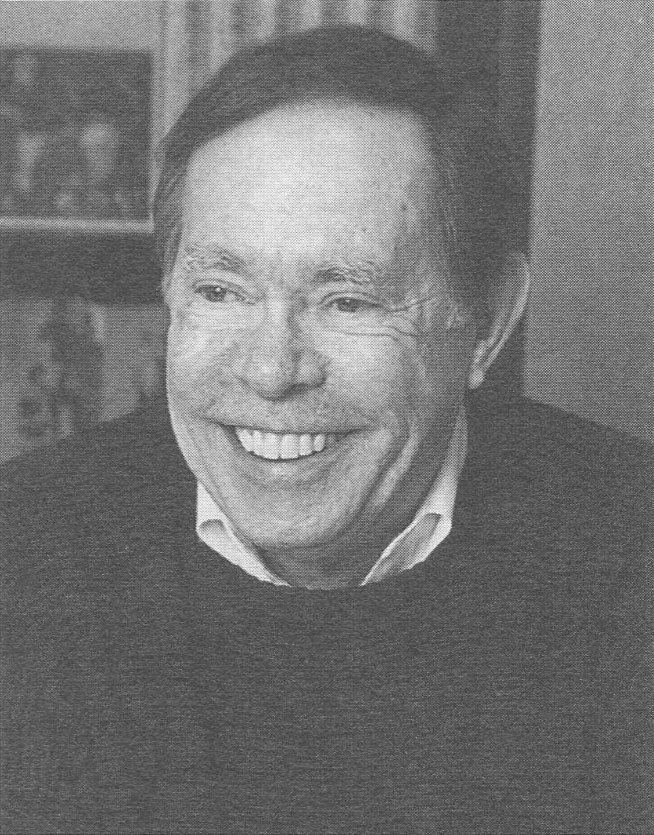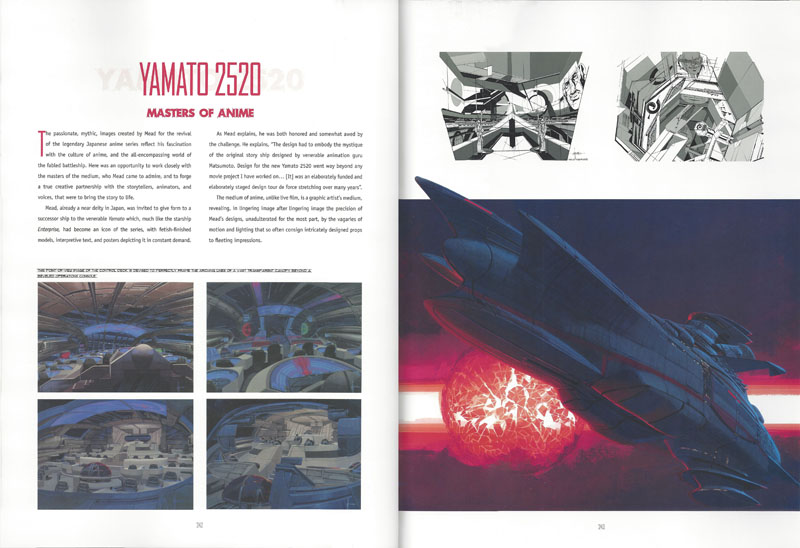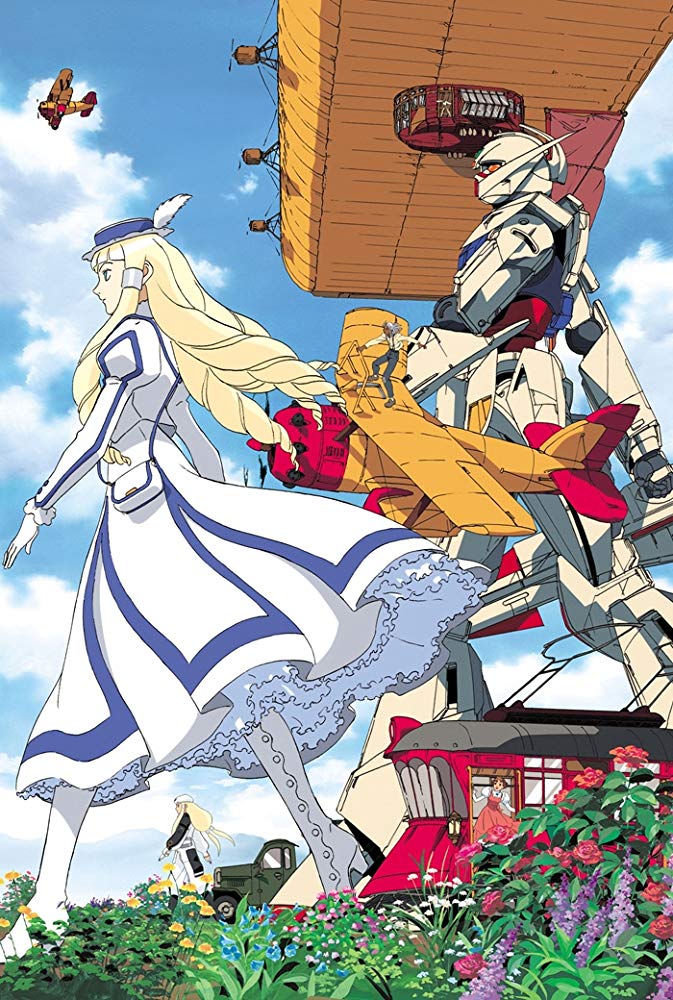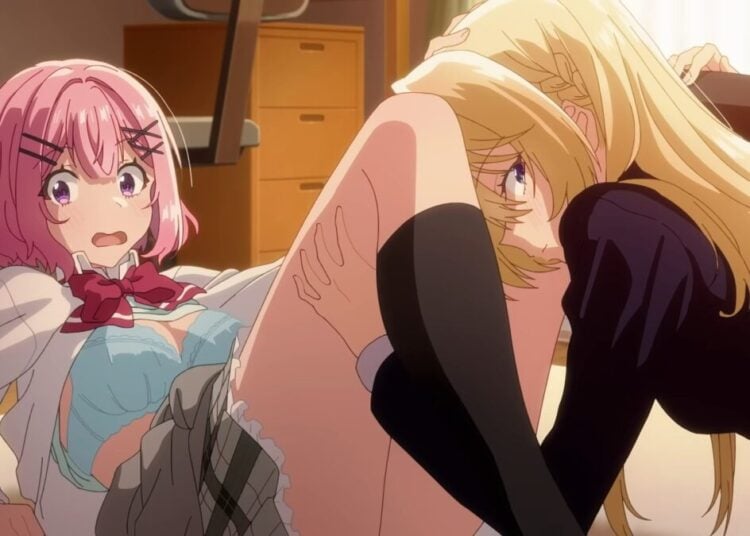Syd Mead passed away on December 30th, 2019, leaving behind a storied legacy. As a futurist, artist, and industrial designer, his work needs little introduction. Yet, while many would point to his work in films ranging from Star Trek: The Motion Picture (1979) to Blade Runner 2049 (2017), less emphasized are his contributions to anime. It’s not as farfetched as this might seem, given how he had established working relationships with Japanese firms such as Sony, NHK, Minolta, and Honda by the 1980s. The anime connection, nonetheless, is as noteworthy as the rest of his star-studded portfolio.

Strictly speaking, his name is attached to only two anime works in the 1990s. Still, they’re more than enough for you to see his massive impact.
Yamato 2520

Directed by the late Yoshinobu Nishizaki, co-creator of the original Space Battleship Yamato (1974-75), Yamato 2520 (1994-96) was intended to be a 10-episode OVA, serving as a sequel set centuries after the TV series. While it came to be overshadowed by a mixed reception and myriad troubles, with Nishizaki himself being sued by Leiji Matsumoto over a breach of copyright, the three episodes that did see the light of day remain a solid work in their own right. On top of having a rousing soundtrack by David Matthews, the OVA’s success could be attributed to the work done by Syd Mead for the production.
Intro snippet from the Yamato 2520 OVA, showcasing the intricate yet recognizable designs by Syd Mead in motion. Circa 1994-96. (Source: YouTube)
His involvement, according to a Yamato fanzine, could be traced back to around 1988, when pictures featuring him alongside Nishizaki and Matsumoto surfaced. As it became evident, his contributions would go much further than just name recognition. Notably, as revealed in the making-of documentary The Quickening, he was responsible for designing the sequel’s take on the ship, even going so far as to create a CG model of it, which was rather impressive for the early 1990s. As the man remarked, it was something of a challenge:
The challenge of taking the Matsumoto version of the Yamato to the next stage was that the TV animation series had a huge fan audience, first of all. And they expect to see or recognize that look, even though you’ve changed it quite a bit. The challenge was to keep the same three-dimensional silhouette and make it at the same time completely new, but somewhere inside the outline and the detail, you’d see the recognizable profile and characteristic of the Yamato.
Not only did he succeed in that regard, but the same could also be said of his designs for the various factions and locales. Whether it’s the frontier backdrop of the planet Rinbos or the intricate yet utilitarian looks of the spacecraft, one could easily see Mead’s distinct futurist touches shine through. All while showing his admiration for anime, especially with its ability to serve as a canvas free of the limitations of live-action. Well after the OVA came and went, he expressed pride and awe in what he helped bring to life.

Even now, in light of the much more successful relaunch of the franchise with Space Battleship Yamato 2199, it’s not hard to see why. Or how the aesthetics of 2520 still manage to hold up well, if not influence, later works in the storied saga.
Turn A Gundam

Just as noteworthy are Syd Mead’s contributions to mecha, as immortalized in Turn A Gundam (1999). As Yoshiyuki Tomino returned to the media juggernaut he spawned for its 20th Anniversary, the series had come to be seen as one of the director’s best works and a rebuttal to his previous “Kill ‘em All” reputation. It’s also notable for its distinct aesthetics, which can be attributed to the American designer.
Japanese documentary footage, showing Syd Mead himself (starting around 10:45 minutes) talking about his involvement in the creation Turn A Gundam. Circa 1999-2000. (Source: YouTube)
This technically wasn’t the first time Mead dabbled with the franchise. Not only did Tomino himself commission him to make an official poster for Mobile Suit Zeta Gundam, but the creator was noted as admiring his work during bouts of depression. It’s little surprise, then, why he was approached and brought on as a designer. Even with the material provided by Sunrise and Tomino’s staff, just as with Yamato 2520, he considered the task before him a challenge. As he recounted in a DVD interview from around 2010 on the titular mecha itself:
The philosophy was that it had to be recognizable to the fans, instantly. They hired me essentially to create a new zero-base, which could be modified as story-time goes on. The difficult part was you had 20 years of fan memory in your head, so I had to be very careful of what I did to this character to change it. I put the Roman helmet accent on, I moved the antennae down to underneath the nose, which got a negative reaction from the hardcore fans — but eventually everybody liked it, I think.
Granted, the Gundam’s appearance was rather divisive upon the show’s airing, to say the least. Even Tomino himself admitted how hiring Mead and giving him free rein may have been a mistake upon seeing the unorthodox designs, though it was by then too late to change course. Nonetheless, he was proven right. As strange as the robotic mustache and generally alien design can be, the Turn A’s distinct, otherworldly appearance not only goes far in making it stand out from its predecessors (and successors) but has also gained more than its fair share of fans, including Sunrise itself. These similarly extend to both his direct contributions (most notably the SUMO mobile suit and Turn X) and how well they blend into the overall tapestry of the show.

It’s not for nothing that, even with all that’s said and done, Mead remained proud of his work on the anime, while expressing gratitude to Tomino and the animators for giving him that opportunity. Or that said work continues to be popular within the storied franchise.
Although he never again returned to the anime scene, though he still expressed interest years later, his contributions there are no less significant or memorable than those in Hollywood. If anything, their timelessness and popularity have ensured that his legacy would live on, long into the future.



![Sawaranaide Kotesashi Kun Episode 12 [END] Featured Image](https://blog.jlist.com/wp-content/uploads/2025/12/Sawaranaide-Kotesashi-kun-Episode-12-END-Featured-Image-750x536.jpg)










